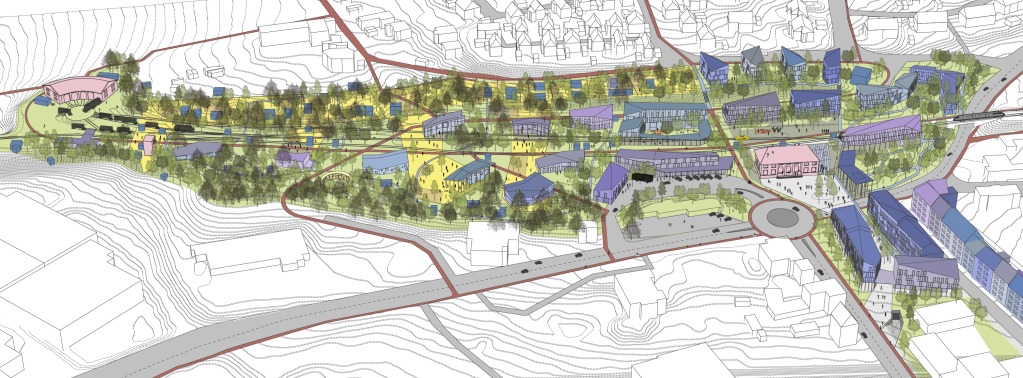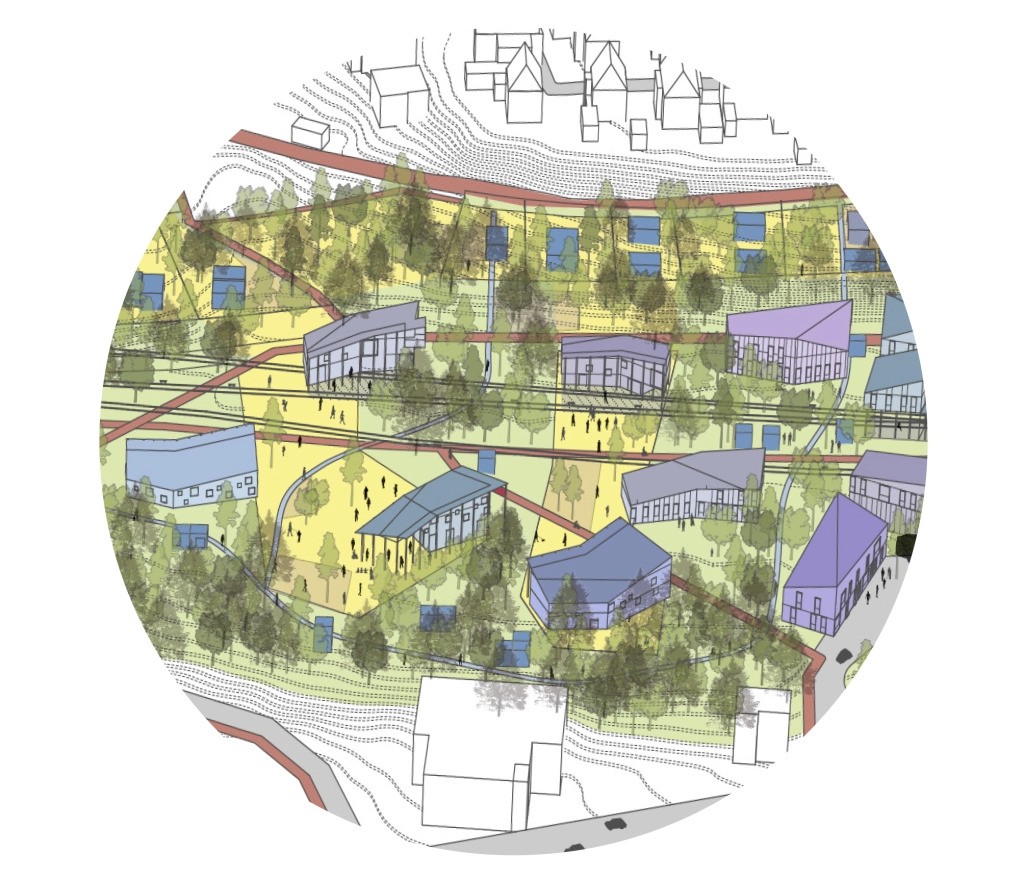/ Europan 15
The New productive Habitat of Selb

Our Europan 15 proposal, ‘The new productive Habitat of Selb’, focuses on natural presences, urban structure and new productive functions as a whole, with a new balance between urban and environmental structures, local historical legacies and innovative sustainable solutions which will provide a new identity for the entire area.
TEAM:
Project Leader: Leonardo Zuccaro Marchi
Alice Covatta, Piero Medici
CoPE_Collective of Projects in Equipoise – https://co-p-e.com/
Collaborators:
Luca Parlangeli, Andrea Cappiello
Concorso: Europan 11, Selb, Germany.
The site is at the crossing point of two axes, two powerful forces for the development of the city of Selb. From North to South: the urban axis that starts from the city centre of Selb, follows Bahnhofstraße and Poststraße roads, until the former building of the railway station and the Europan site.

From East to West: the natural axis that connects Rosenthal Park, the allotment garden and the abandoned landscape of our site, until the agricultural field. Our site is placed in this sensitive friction zone. Therefore, we trigger actions based one hand on the existing landscape on the other to the implementation of urban development. The scope is to overcome the limit between the urban centre, the infrastructure and the urban countryside, encouraging a new cohesion instead. The project area is therefore conceived with a dual landscape and urban character, in order to highlight the strengths of these axes: whereas on the west the natural/productive landscape surrounds the buildings, on the east the new urban structure embraces new public spaces. The dismissed railway becomes the “stem” of development, a pedestrian/bike link. This dual urban/ landscape system enhances the development of a broad variety of productive habitat, as result of the meeting between productive/creative functions – from manufacture to school, from makers/startups to hotels and diffused hostels, from sport facilities and productive gardens to playgrounds/kindergartens – new houses for different types of population – from elders to young families, to commuters – and the offer of multiple diverse public/open spaces – from commercial squares to small courts, from gardens to stages forests.




